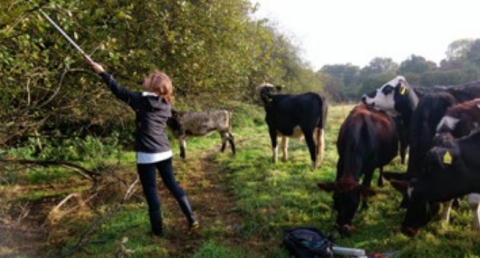Summary:
•Silvopastoral agroforestry – integrating shelterbelts, hedgerows or in-field trees with grazing livestock – can provide domestic animals with benefits, including shelter and shade, as well as supplementing their diets as tree browse or fodder.
•This study sampled leaves from three native deciduous tree species – willow, alder and oak – from three sites across the UK, and analysed their mineral, energy and protein content.
•Willow leaves from all sites were found to contain higher concentrations of zinc and cobalt than sheep requirements for these minerals. Selenium concentrations were found to be more dependent on the site than the tree species.
•Metabolisable energy of leaves sampled was greatest in alder, while higher crude-protein content was associated with spring in all species.
•More research is required to investigate the value of different tree species as a mineral supplement for ruminant livestock, and to address how leaf feed could be integrated into their diet.
Download the resource below.


